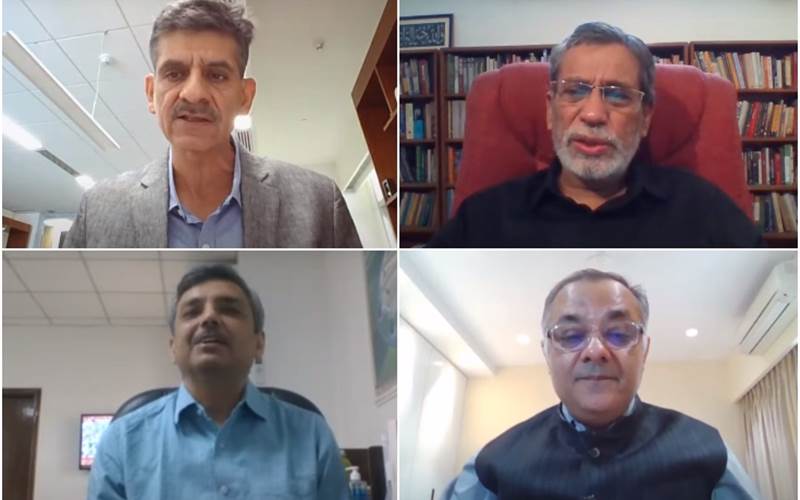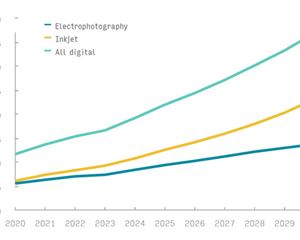Industry experts kickstart FICCI Foodworld India
The inaugural session of Foodworld India 2021 examined the future of the food processing industry and analysed how brands are driving consumption
28 Mar 2021 | By WhatPackaging? Team
The panellists of the first session included Hemant Malik, chair, FICCI Food Processing Committee and CEO-Food Division, ITC; Siraj Hussain, former secretary, Ministry of Agriculture and Food Processing Industries, Government of India; Manoj Joshi, additional secretary, Ministry of Food Processing Industries, Government of India; and Mohit Anand, co-chair, FICCI Food Processing Committee and MD, Kellogg’s India.
Hemant Malik, chair, FICCI Food Processing Committee and CEO-food division, ITC kick-started the discussions on a positive note by highlighting the findings in the latest Nielsen report, which mentions that the food processing industry is back to normal.
However, not everything is rosy. There are challenges. Some of the commodity prices have shot up. Prices of edible oils, which are one of the major commodities in the food processing industry, have shot up by almost 70% since the beginning of the pandemic.
Meanwhile, packaging material, which is a big cost component, has seen a price increase of 40-50% in both laminates as well as carton brown boxes. The way pricing works, the inflation would be carried forward into the price and we would have to see how it impacts volume growth.
“We are seeing a paradigm shift in consumer trends due to a global demand for food safety and increasing food security, increased demand for sustainability and reliability of supply chain particularly post Covid-19,” says Malik.
Malik also highlighted the shift in consumption patterns. “We see an increase in hygiene and immunity-based products,” he says. “The increased awareness about health and wellness and lifestyle changes is going to transform the packaged food industry.”
Malik is of the view that a lot of unpackaged food will move to packaged food. “The second transformation will take place in how our marketing communication and product value proposition are worked out,” he adds.
He says the work-from-home culture has brought about a rapid shift in consumer culture and eating habits. This has impacted the on-the-go consumption, which is down by about 25-30%. Snacking in between meals is increasing or so are healthier alternatives and precooked ready-to-eat meals. Concern around preservatives and health is positively impacting organic foods.
The changing trends, however, bring new opportunities. The Nielsen data shows that during the Covid period alone, more than 3,500 new products were launched in the food space out of which half were around health and hygiene trends.
“India faces challenges of obesity, diabetes along with a large population, which is malnourished. If we look at the NFS 2020 report and compare it to the 2015 report, there hasn't been much change. This is an important area that food manufacturers can work on,” Malik observed.

Edible oil prices have shot up by almost 70% since the beginning of the pandemic
New trends in sustainability, health and wellness, and convenience are some pillars that will drive formulation, packaging and marketing in the food and beverage industry.
Malik explains: “The role of FSSAI has been very important during these times. They have come up with very clear regulation during the Covid times so that the entire packaged food industry can be part of essential commodities.
“More importantly, FSSAI is bringing in global benchmarks to make sure that Indian food standards are similar to global benchmarks. A lot of work has happened in creating a digital ecosystem, which is helping in licensing and ease of doing business.
“There have also been discussions around colour-coding of products to indicate high-fat high sugar content. If we follow the WHO CRO guidelines, a lot of our everyday products will get coded red. Hence, more discussion and working together are necessary.”
Siraj Hussain, former secretary, Ministry of Agriculture and Food Processing Industries, GoI says, “We are going through very difficult times, and it is really laudable that the food processing industry is not finding itself in much stress. My sense is that the unorganised industry, which is not very well represented in such conferences, must be going through real stress.”
The last NSSO data of 2011-12 found that 12% of total calories are coming from processed food in urban areas and for rural areas, this number stands at 9%. In the highest per-capita income bracket the calories from processed food are at 30%, whereas the same category in rural areas consumed 13% of their calories from processed food.
“The colour coding discussion, which is on the cards from FSSAI, should be taken up with adequate consultation with the industry so that there are no sudden moves. But at the same time consumers have a right to know what they are eating,” says Hussain.
He adds that urban areas are already taking a high-calorie intake of processed food and this number is only going to go up as we recover from the Covid situation. “What is needed is we focus on healthier processed food options and processed food that is geared towards working women as their participation in the economy increases,” Hussain suggests.
Meanwhile, Manoj Joshi, additional secretary, MoFPI, GoI says that the cheapest foods are the unhealthiest and the healthier alternatives are expensive.
“The second issue is about credibility over what is healthy food. We need to be careful that we don't lose credibility. Right now, consumers are not assured. So changing pricing structures, demand structures, and gaining credibility can be a big growth trend for the industry,” Joshi says.
“Another area is establishing a direct link between farmers and consumers,” he adds. “Focus on perishable products could increase farmer's incomes.” He further says that one of the foremost challenges is that prices of perishables are higher than international prices.
“When you compare processed food in a perishable segment with fresh produce, we find the price of processed food is high. We won't buy tomato puree when fresh tomatoes are cheaper. The difference is more than five times. So, reaching a higher consumer base is a challenge and requires both industry and consumers to work together,” suggests Joshi.
Small micro food producers are one of the largest components of the SME industry. They have issues with productivity, quality and packaging. Joshi explains that it is difficult for micro or small producers to sell their produce in this country.
“Consumers prefer branded products and if they buy unbranded, they would pay a much lower price, while the cost of manufacturing is probably the same and cost of procurement is higher compared to large producers,” he says. “It is a challenge, but if we see the benefit to society in terms of income and employment, it is far bigger than what we see with large producers. A lot of innovations and traditional foods come from these segments, which large producers often don't want to produce.”
Joshi also explains why India has a very small presence in the international market. “We never focused on it, as the domestic market is large enough,” he notes. “Apart from some small brands and brands that cater to Indian diaspora worldwide, we don't have any brands that are truly global.”
For this, he suggests the government and industry work together in identifying a few segments and focus on international brand-building in these segments, for which industry participation and suggestions would be required.
Speaking about FSSAI, Joshi says the task of colour coding packaged foods is very challenging. “Many of the Indian foods cannot be called healthy foods. Every mithai and fried namkeen would get classified into an unhealthy category,” he remarks.












 See All
See All